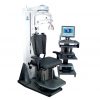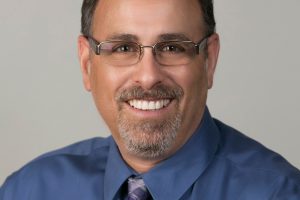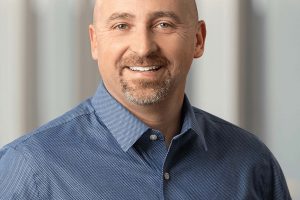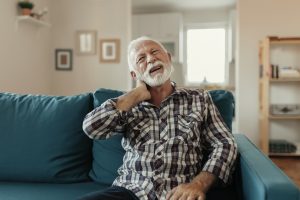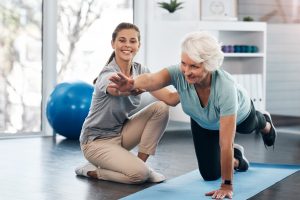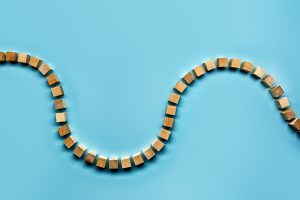
4 Types of Scoliosis and Their Interventions
Treatment GuidelinesScoliosis is a spinal deformity that affects the curvature of the spine. While the spine naturally curves in the cervical, thoracic, and lumbar regions, scoliosis causes abnormal curves and changes.
Scoliosis is a spinal deformity that affects the curvature of the spine. While the spine naturally curves in the cervical, thoracic, and lumbar regions, scoliosis causes abnormal curves and changes. Scoliosis is actually a “3D” problem. The body is divided into three planes: the coronal, sagittal, and axial1. These distinguish the front from the back, right from left, and top from bottom. Therefore, any abnormal curvature along any of these planes constitutes a scoliosis diagnosis.
The existing curves of the spine maintain balance, distribute weight in the body, and manage the stress of daily activities. Changes in this curvature result in an imbalance. Uneven pressure can lead to physical signs and symptoms. For example, people with scoliosis often have a “C-shaped” or “S-shaped” spine. Sometimes, the vertebrae themselves can twist or rotate. This misalignment can occur in the thoracic or lumbar region of the spine and often results in visible postural changes2.
What Are the Symptoms?
The trademark of scoliosis is the curvature of the spine. The vertebrae usually not only curve but also twist on themselves. This misalignment leads to physical manifestations, such as uneven shoulders, waist, or hips. The shoulder blades or ribs may also be unbalanced, with one side sticking out. This unevenness can also result in leaning to one side or the head being out of alignment with the body. Clothes also may not appear to fit correctly, and occasionally the skin seems different over the affected area.
Scoliosis also causes other problems as time goes on, especially when left untreated. The unbalanced pressure on the spine often causes back pain, most often in adults. In rare instances, the misalignment can also affect the ribs and cause trouble breathing. Most cases, however, are only associated with mild back pain. Patients who experience moderate to severe back pain should see their doctor to address underlying associated conditions.
What Are the Causes?
There are four types of scoliosis: congenital, idiopathic, neuromuscular, and degenerative2. In congenital scoliosis, the misalignment occurs as a result of deformed vertebrae or ribs present at birth. A variety of developmental factors can cause this deformity2.
About 80% of cases are considered idiopathic1. Doctors are still unsure what causes this form, and there is no evidence to suggest that it comes from diet, activity, or posture. Instead, the cause of idiopathic scoliosis may be related to genetic factors, as it seems to run in families. This form of scoliosis usually is diagnosed around the age of 10.
Neuromuscular scoliosis comes from underlying neuromuscular conditions. The development of the spine is affected by the surrounding musculature. Conditions such as cerebral palsy and muscular dystrophy affect muscle strength and tone and can affect the spine’s development. Diseases that affect the spine, such as spina bifida, can also contribute to spinal deformity and scoliosis. This form of scoliosis is often the most serious, as several factors are at play.
Degenerative scoliosis is diagnosed in adults over 65 and is attributed to wear and tear from age. The spine naturally degenerates with age, and in some more than others. Occasionally, these age-related changes are significant enough to affect postural alignment.
Diagnosing Scoliosis
Scoliosis requires multiple tests for confirmation. A physical examination is often enough to establish concern. Many of us are familiar with Adam’s Forward Bend Test1. This test has the patient bend 90 degrees from their waist. Standing behind the patient, a clinician can easily see if shoulders, hips, or ribs are misaligned. Confirmation of the diagnosis then comes with further testing. MRI, CT scans, and X-rays can provide more information on the location and severity of the curves. After scans, an angle of over 10 degrees indicates the presence of scoliosis. The curve is significant if above 25 degrees and severe if over 45 degrees.
Treatment Methods for Scoliosis Care
Scoliosis is often not severe enough to require intervention. Many idiopathic cases suffice with a “wait and see” method, monitoring the curvature of the spine over time. As children grow, if it does not become more severe, treatment may not be necessary.
On the other end of the spectrum, neuromuscular scoliosis may require surgical intervention. Rods in the spine help correct the positioning, or decompression surgery can release the pressure. However, only the most severe cases require surgery.
For moderate scoliosis in children, braces help correct and prevent further deformity. Children should start using a brace before they’ve finished growing and wear it for about 20 hours per day. Studies have shown that the use of a brace is effective in 80% of children with scoliosis.
No matter the severity, scoliosis significantly alters the back muscles. A misaligned spine leads to imbalanced muscles, and these could even pull the spine back out of alignment once corrected. With their mastery of the musculoskeletal system, Chiropractors, PTs and OTs can treat this imbalance in outpatient care. Strengthening the weak muscles and relaxing the tight muscles can provide pain relief and can increase carryover of any improvement made3.
Stretches for Scoliosis
Working to lengthen the muscles on the “tight side” of the curve can help to alleviate pain and pressure on the spine4. While the best stretches will vary for each patient, a latissimus dorsi stretch can be especially beneficial. Our lats run the length of our whole back, so scoliosis curvature particularly affects them. To perform a latissimus dorsi stretch, have the patient stand with feet shoulder width apart and good posture. The patient takes their right wrist with their left hand and brings their arms overhead. Bending to the right side, the patient should feel a stretch on their left. Breathing deeply, the patient can hold this for about 10 seconds, relax, and repeat with the other side.
A pelvic tilt stretch can also work to relieve any tightness. Lying on their back with knees bent, the patient places their feet flat on the floor, shoulder width apart. As they raise their hips up, they tighten the abdominals and bring their hips in line with the rest of their body. After 10 seconds, they slowly lower their hips. This stretch is especially effective for lumbar scoliosis.
Exercises for Scoliosis
A Chiropractor or Physical or Occupational Therapist could also provide strengthening exercises to address weakness on the affected side. If the muscles are too weak, they are unable to hold the spine in its proper alignment. Any exercises that improve core strength and proprioception will be beneficial to a scoliosis patient5.
Exercises to improve core strength are very beneficial, such as planks and an abdominal press6. To do an abdominal press, the patient will lay on their back and raise their legs, bending the knees at a 90-degree angle. Engaging the abs, they will place their hands on their knees. In an isometric movement, they will press with their hands will bringing their knees in toward their chest. Neither their arms nor legs should move during this exercise. They will maintain the pressure for about 10 seconds, and then relax. They can repeat this exercise as two sets of 10 reps.
Home Modifications
Treating scoliosis extends beyond interventions in the clinic. You can also include recommendations on what to include or avoid at home. Practicing good posture is essential to improve scoliosis, and ergonomic recommendations can make all the difference. Maintaining the head and neck in good alignment during activities is essential, such as by working at eye level. Ensuring workstations are at the correct level can also be helpful. Avoiding activities that compress or twist the spine is vital, as the spine is already compressed enough!
Benefits of Chiropractic Treatment of Scoliosis
Chiropractors are in a unique position to address scoliosis. Just like Physical and Occupational Therapists, they provide exercises and stretches to address the muscles of the back. However, a Chiropractor can also provide adjustments to correct spinal alignment. Of course, manipulation cannot change the spinal deformities. But the alignment of surrounding joints can be affected when the spine is curved7. Scoliosis can place excessive pressure on the neck, the shoulders, or the hips. Chiropractic adjustment can allow for improved function and decreased pain. Chiropractors can also order scans and make referrals as necessary. Studies8 have shown that long after chiropractic treatment, scoliosis patients continue to experience relief.
Conclusion
Scoliosis varies largely from mild and pain-free to severe and debilitating. However, through Chiropractic treatment or treatment from a Physical or Occupational Therapist, patients can find relief! Stretches, exercises, and home modifications, as well as Chiropractic adjustments, all can alleviate pain and decrease deformity.
Sources
- “Scoliosis”. American Association of Neurosurgeons. 2021. https://www.aans.org/en/Patients/Neurosurgical-Conditions-and-Treatments/Scoliosis
- “Overview: Scoliosis”. NHS. 2020. https://www.nhs.uk/conditions/scoliosis/
- “Setting the record straight: scoliosis and chiropractic”. 2020. Alberta College and Association of Chiropractors. https://albertachiro.com/ACAC/Chiropractic_in_Alberta/BLOG/Setting_the_record_straight__scoliosis_and_chiropractic.aspx
- Nalda, T. 2021. “Spine Stretches for Scoliosis: What Works and What Doesn’t”. Scoliosis Reduction Center. https://www.scoliosisreductioncenter.com/blog/spine-stretches
- Villines, Z. 2019. “7 stretches and exercises for scoliosis”. MNT. https://www.medicalnewstoday.com/articles/320457#outlook
- Smith, J. 2015. “Exercises for Scoliosis: How to Develop Programs for Clients with Scoliosis”. ACE. https://www.acefitness.org/education-and-resources/professional/expert-articles/5576/exercises-for-scoliosis-how-to-develop-programs-for-clients-with-scoliosis/
- “What do Chiropractors do…for Scoliosis?” 2019. Cleveland University Kansas City. https://www.cleveland.edu/blog-post/~post/what-do-chiropractors-dofor-scoliosis-20190613/
- Morningstar, M. 2011. “Outcomes for adult scoliosis patients receiving chiropractic rehabilitation: a 24-month retrospective analysis”. NCBI. https://www.ncbi.nlm.nih.gov/pmc/articles/PMC3259989/
